What Hi-Fi? Verdict
JBL’s classy headphones certainly look the part, they just lack dynamic and rhythmic finesse when compared to the class leaders
Pros
- +
Energetic presentation
- +
Reliable touch controls
- +
Classy build and finish
Cons
- -
Beaten for dynamics and subtlety
- -
Coarse and unrefined upper mids
Why you can trust What Hi-Fi?
At first glance, the Tour One over-ears look and feel far too minimalist and monochrome for JBL. Where are bright colours? Where’s the white branding to emphasise the JBL exclamation mark? In JBL’s own words, the Tour One over-ears (and their counterpart, the Tour Pro+ in-ear model) have been “designed for business professionals”, and we can see that. For starters, these wireless noise-cancelling headphones boast up to 50 hours of music playback from a single charge and can access virtual voice assistants from Amazon and Google – all very business-like.
Although JBL’s two-strong Tour headphone series was first unveiled in January 2021, the US audio giant only let them loose on the general public in May. So are they worth the wait? And crucially, can they challenge class-leaders Sony, Bose and Sennheiser in this dog-eat-dog category?
Price
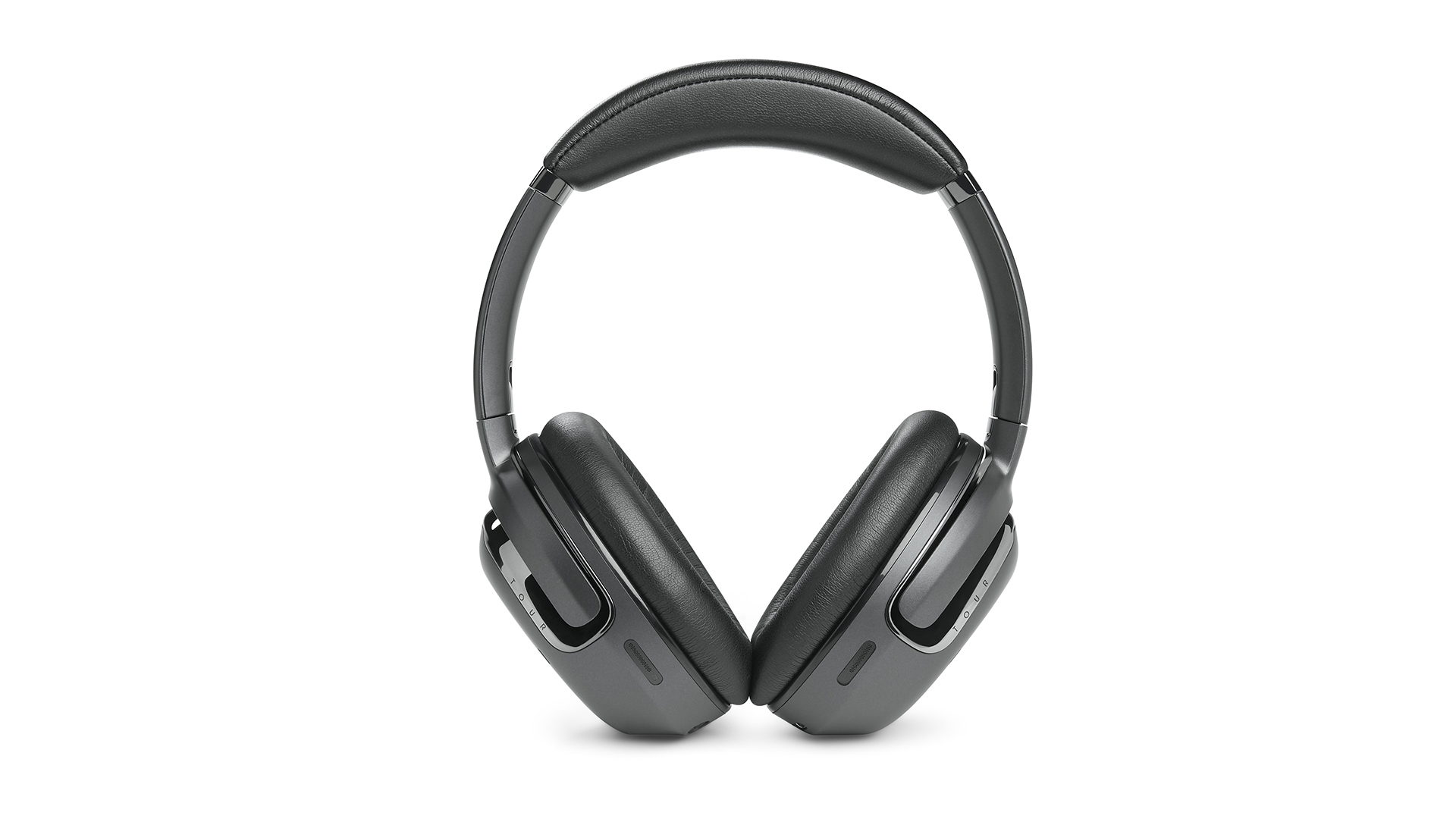
At £279 ($299), JBL’s Tour One headphones aren’t cheap, but they do undercut the Apple AirPods Max (£549) by a considerable margin.
They’re more in the ballpark of the now regularly discounted, Award-winning Sony WH-1000XM4 (currently around £279/$399/AU$395), also-reduced Sennheiser Momentum 3 Wireless (roughly £233/$270/AU$380) and Bose’s talented Noise Cancelling Headphones 700 (£250/$379/AU$395) at the time of writing).
These are among the most popular options at this price level, and that’s before you look at models that sit just below their level. Plenty of competition for JBL, then.
Build and comfort
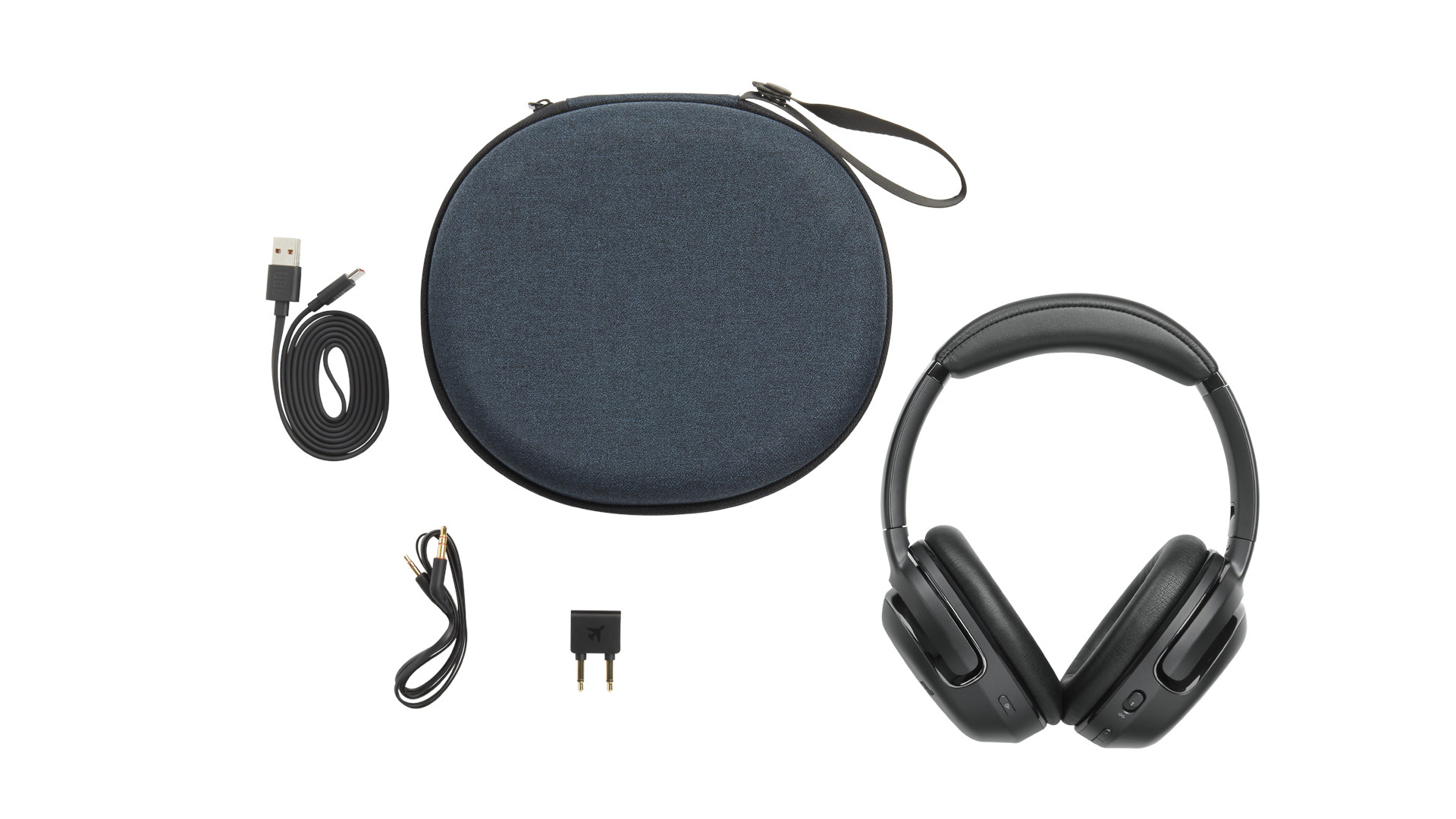
Unbox the Tour One and the first thing you see is a premium moulded black travel case with a useful snap-fastener on the zip. Inside, the earcups are rotated 90 degrees to lie flat, with the left one folded up towards the headband for greater portability. The smell of classy faux leather from the padded cups and top portion of the headband puts us in mind of much pricier studio over-ears – and we can’t help but notice the similarities between these cans and the Sony WH-1000XM4, which look almost identical in their travel case.
The rest of the Tour One are finished in black plastic (black is the only colour available), but it covers a durable metal frame. The metal extension strap within the headband features etched lines, so you can extend them evenly on each side. They aren’t the most aesthetically original headphones on the market and there’s no IP rating for water or dust ingress, but the high standard of finish we’d expect from an established and trusted name such as JBL has certainly been met.
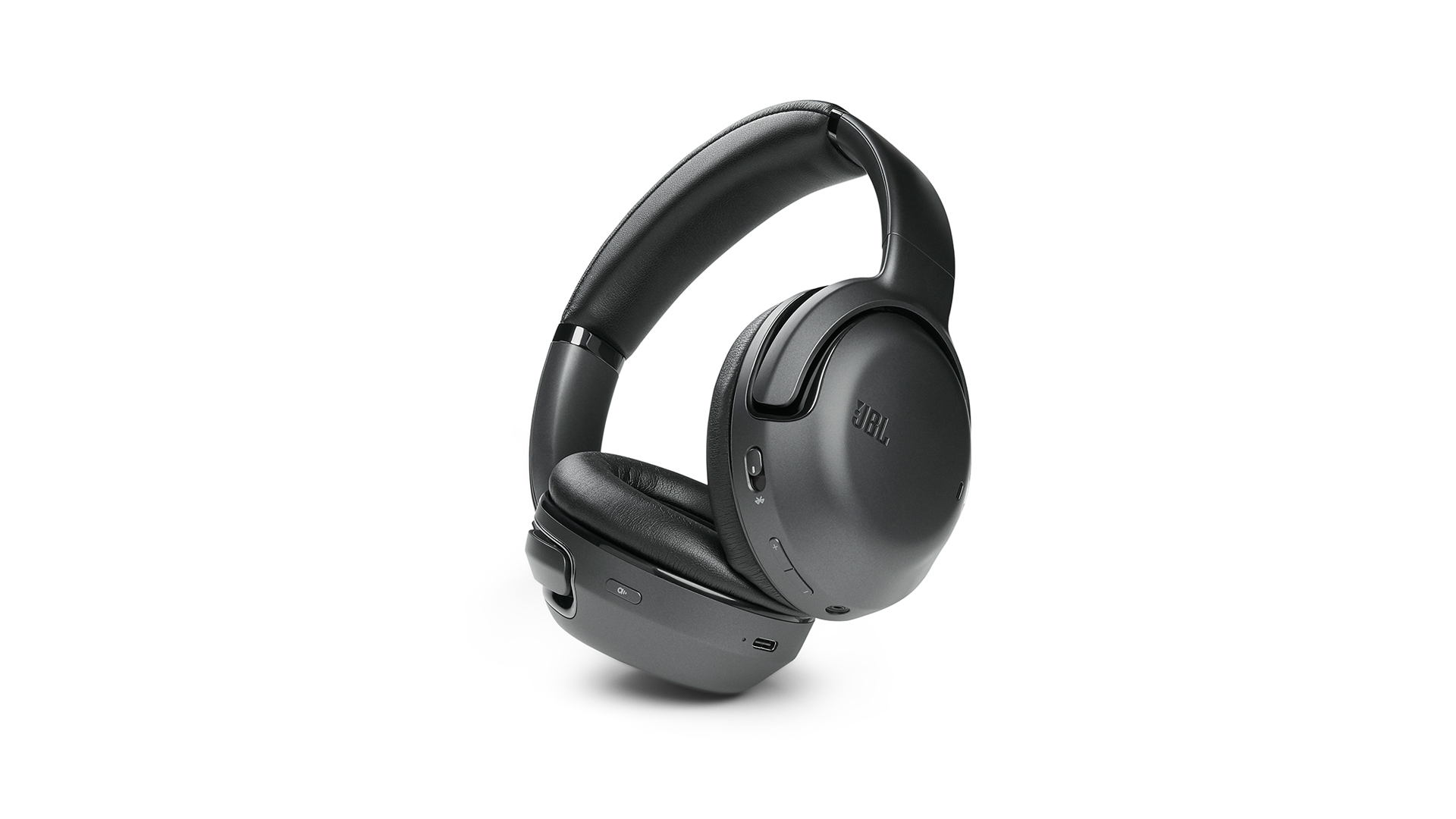
Finishes x1
Battery life up to 25 hours (ANC on), up to 50 hours (ANC off)
Driver size 40mm
Weight 268g
Bluetooth 5.0
Features TalkThru, Ambient Aware and Adaptive Noise Cancellation/everyday ANC profiles, Wearer-detection
As we don them, the clamping force is practically perfect and also well weighted so that they stay put across the course of our listening sessions. The Tour One features 40mm drivers behind the oval, slightly angled earcups plus a four-mic array for taking calls, which are remarkably clear during our testing.
On the right earpiece, the power/pairing switch and physical volume controls sit on the back edge of the earcup, closest to your neck. The entire top surface of this earcup is touch-sensitive and reacts quickly with a demure beep to stop playback, start it, skip tracks or scroll through noise-cancelling ambient sound control profiles with a long-press – but this can be customised in the JBL Headphones app.
The left earcup has just one physical button, also towards the back edge of the earcup, which can be customised either to access Alexa or the Google Assistant, or scroll through ambient sound profiles. It’s a neat solution and it works very well indeed. Having tested countless models that have iffy or unreliable touch controls, it is refreshing to find a reliable solution that means we rarely need to dig out our phone.
Bluetooth 5.0 is at the helm, and battery life is 25 hours with Bluetooth and noise-cancelling switched on, and around 50 hours using just Bluetooth. Thanks to Speed Charging, a quick 10-minute stint at the power socket (via USB-C on the left earcup) should be enough for two hours of playback. Want to get wired? Fine – there’s a 2.5mm jack on the right earcup and a 2.5mm-to-3.5mm cable supplied.
Features
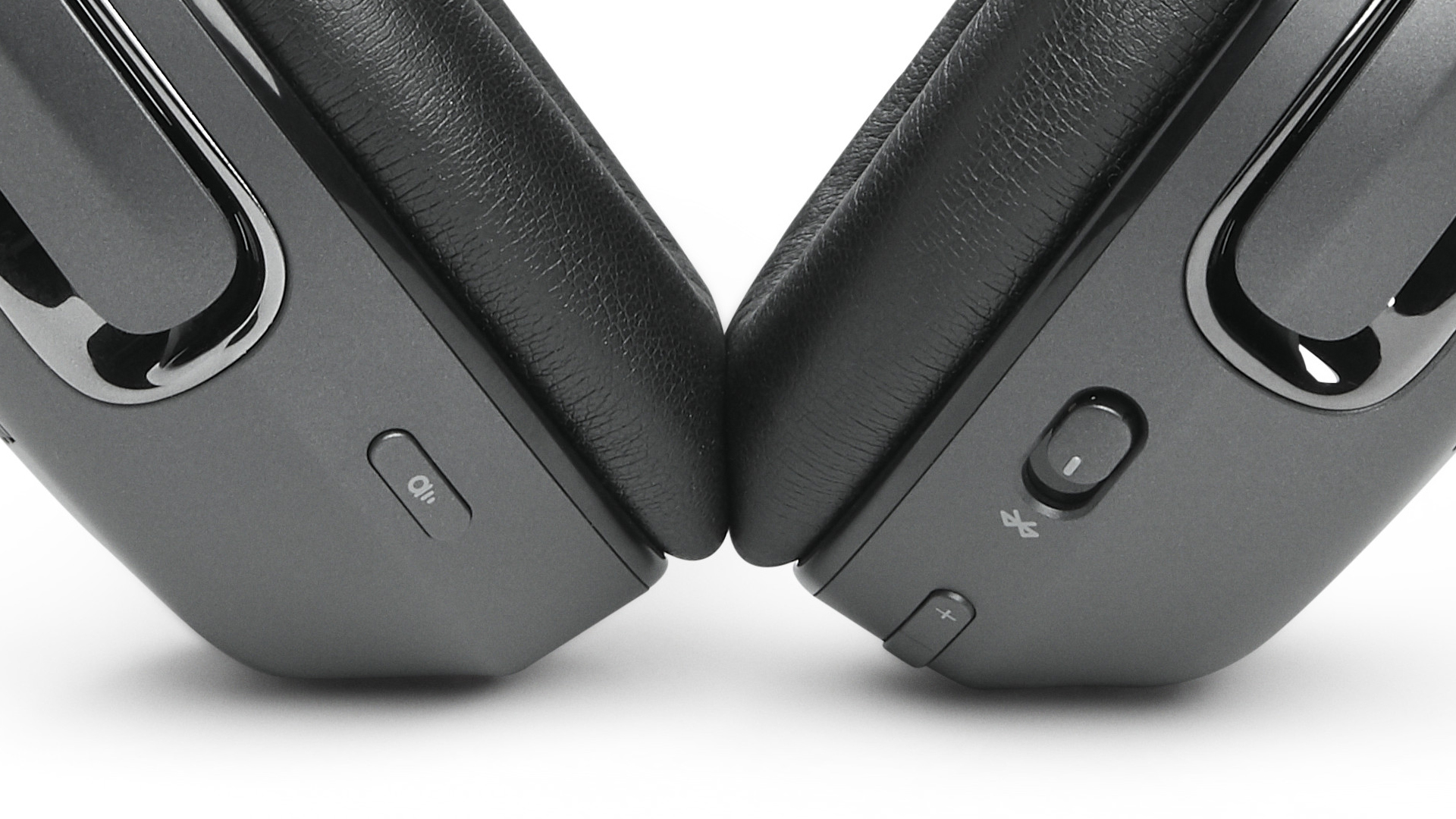
To set up the JBL Tour One after initial Bluetooth pairing, the JBL Headphones app first sends us to the Alexa or Google Assistant app to add them as an accessory, then slickly redirects us back to our JBL Headphones in-app control centre. Here, under the Noise Cancelling tab, you can select between True Adaptive ANC (which monitors your environment in real-time and alters the level of noise-cancelling automatically) or ‘everyday mode’, underneath which is written the somewhat blasé explanation “Block out the noise of everyday life” – but essentially it just means that ANC is on.
We find the True Adaptive ANC a little distracting because we can hear the levels of isolation audibly change, occasionally creating a disconcerting wind-tunnel effect when out and about, and while the everyday mode is easier on our ears and perfectly sufficient for cutting low-level noise, it isn’t the most effective performance we’ve ever heard at this level. It’s also worth noting that it is impossible to tweak or customise these profiles further than ‘on’ or ‘off’.
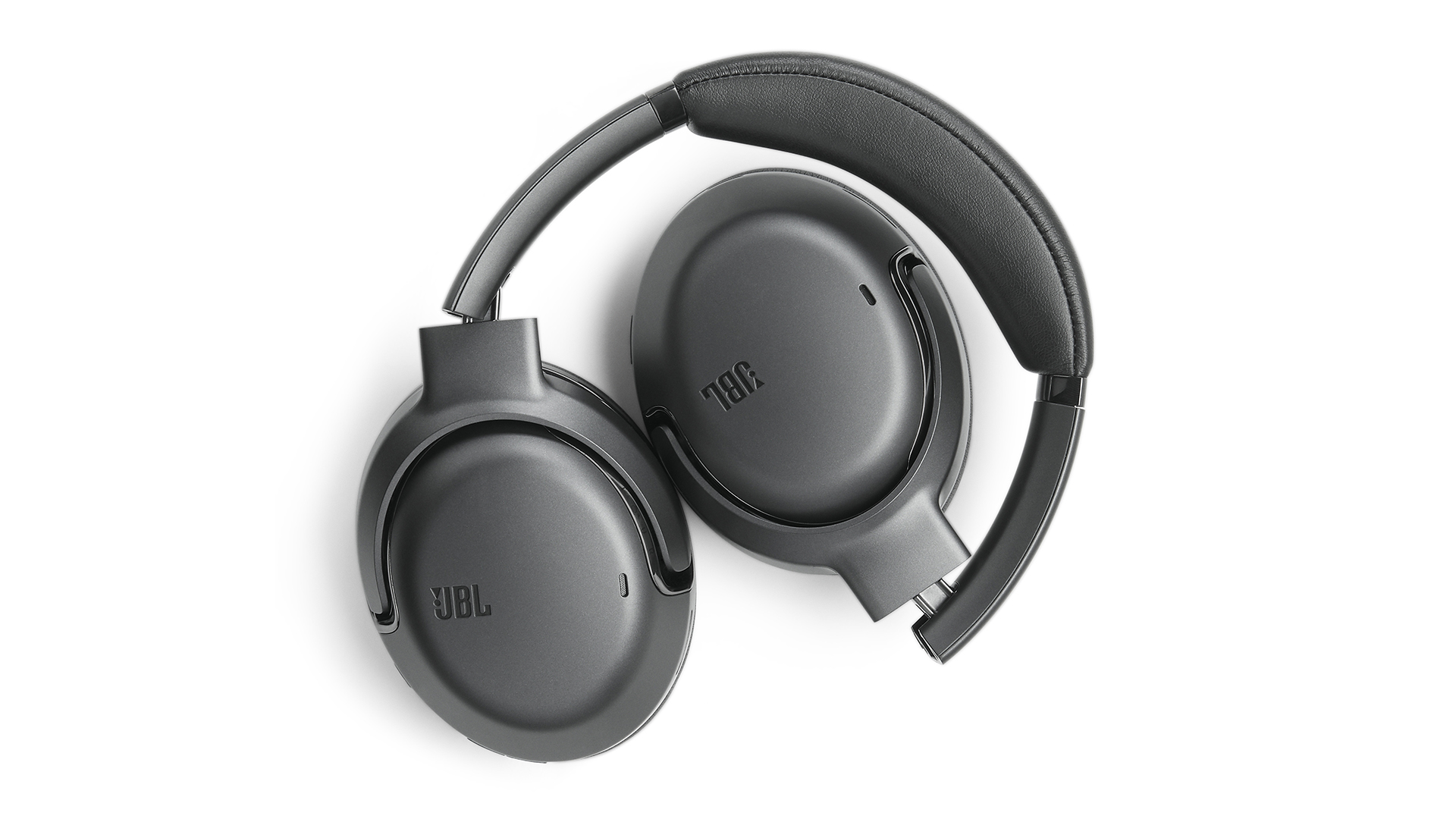
You’ve also got an Ambient Sound Control tab, to locate Ambient Aware or TalkThru profiles (where Ambient Aware filters external sounds in, and TalkThru mutes playback in addition to this), and lastly, an interesting new tab called Smart Audio and Video. By selecting one of the three profiles under this tab, JBL allows you to optimise the Bluetooth connection for normal listening, switch up the quality in “music mode” or switch to the low-latency “video mode” to get your picture and sound in perfect sync – although we’re still unsure why you can’t watch videos and listen in the best quality, particularly as multi-point connection is supported to a maximum of two devices. We try switching between the two while watching a YouTube video on our phone and are unable to detect notable differences or benefits in either mode, but it’s an interesting idea nonetheless.
At the bottom of the app’s intuitive home screen is an EQ tab, to select from five presets, or you can create your own unique line on a frequency stave to emphasise certain frequencies or lower others – and it works very well.
You can also turn wearer-detection off to stop playback automatically pausing when you remove them.
All in all, the app is easy to navigate and well-designed. Is the feature set good enough to take on the class-leading Sony XM4 when coupled with the sound? Sony’s cans are 14g lighter, which isn’t much, but they are slightly more comfortable and cooler during the course of our listening. So, let’s see how the JBL Tour One fares sonically...
Sound
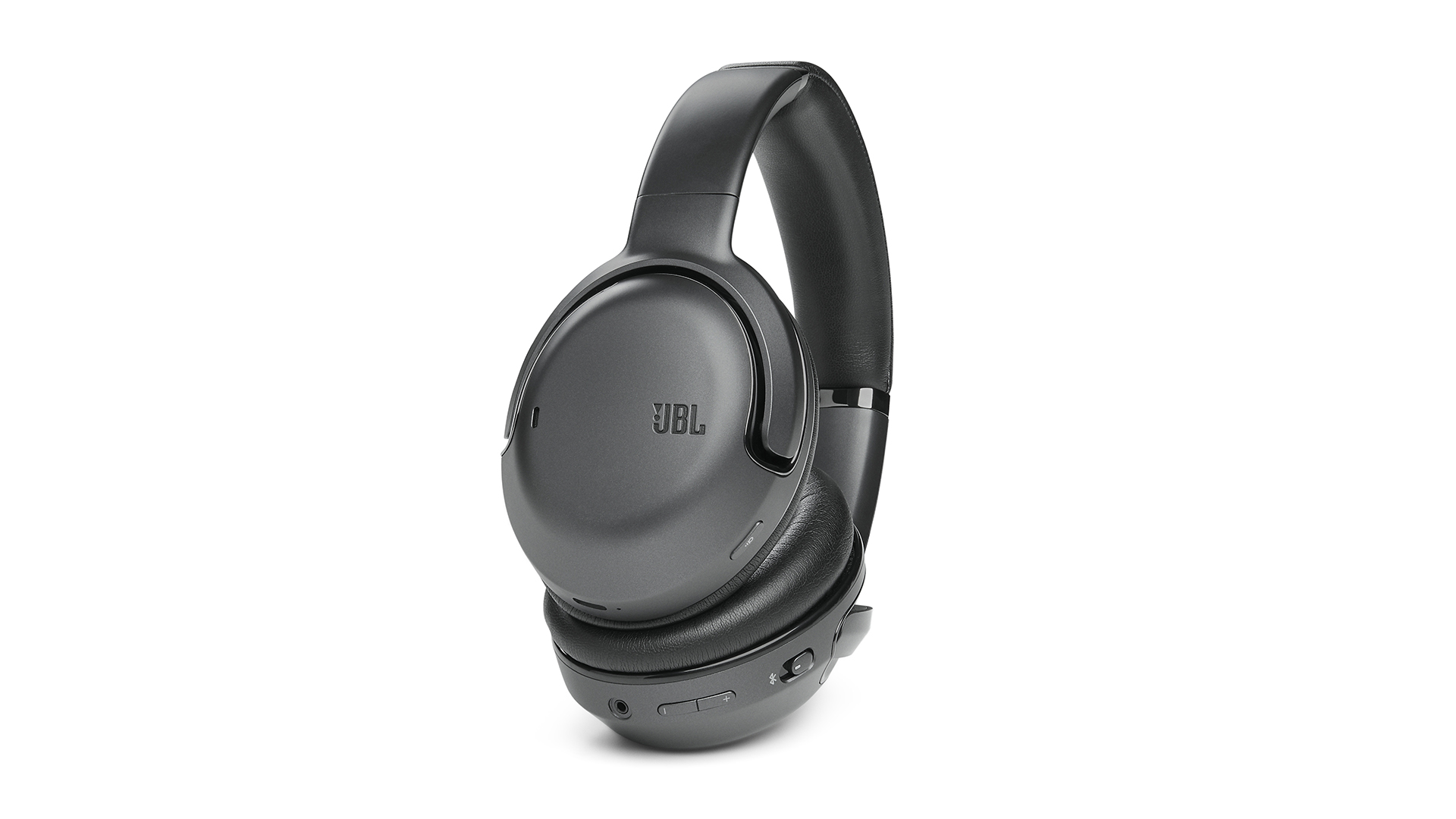
Turning all EQ optimisation off to facilitate a neutral listen, we stream Invisible Touch by Genesis on Apple Music and note the considerable onboard oomph from the Tour One. As the track continues, Phil Collins’ driving drum beat and vocals are delivered with an extra dollop of zeal and energy alongside the separate and distinct canon backing vocals. Throughout Land Of Confusion the vocal is central alongside a grippy bass and treble key progressions as JBL proves the Tour One are at home when handling rock tracks.
We switch to the challenging progressive rock track Thick As A Brick (Pt. 1) by Jethro Tull. The flute feels three-dimensional and the strummed guitar sounds emotive, in as cohesive a mix as the Blackpool prog outfit could have possibly intended. However, it’s here that we start to notice a few shortfalls: the Tour One doesn’t seem to know when to ease off. Through the Sony WH-1000XM4 we hear more dynamic detail in the quieter nuances of the track as it continues to build; the lyrical guitar passages are more sensitively placed in the soundstage so that the surprise power chords, tambourines and trumpets can crash in with extra edginess and impact.
For hip-hop and grime fans, you might assume that the verve and zeal with which J Hus’ Lean & Bop is delivered would mean a huge tick for the Tour One, but the JBL headphones also suffer from a coarse upper midrange, which can become tiring even during short listening sessions. There’s a lack of refinement and subtlety present in both the vocals and instruments across the board, which really detracts from the whole listening experience. It isn’t terrible, it’s just that when you’re up against the Sony Award-winners (and surrounded by a multitude of capable rivals at the money), the differences quickly reveal themselves.
Verdict
JBL’s Tour One headphones certainly look the part and the firm has offered a fresh and compelling feature set in a bid to become a true player in the over-ear noise-cancelling headphones sector. There are some things to like here, but you’ll get extra features and, more importantly, better sound quality if you shop around and look at rival pairs from the likes of Bose, Sennheiser and Sony.
SCORES
- Sound 3
- Features 4
- Build 5
MORE:
Read our Sony WH-1000XM4 review
Read our Bose Noise Cancelling Headphones 700 review
Read our round up of the best over-ear headphones 2021
What Hi-Fi?, founded in 1976, is the world's leading independent guide to buying and owning hi-fi and home entertainment products. Our comprehensive tests help you buy the very best for your money, with our advice sections giving you step-by-step information on how to get even more from your music and movies. Everything is tested by our dedicated team of in-house reviewers in our custom-built test rooms in London, Reading and Bath. Our coveted five-star rating and Awards are recognised all over the world as the ultimate seal of approval, so you can buy with absolute confidence.

